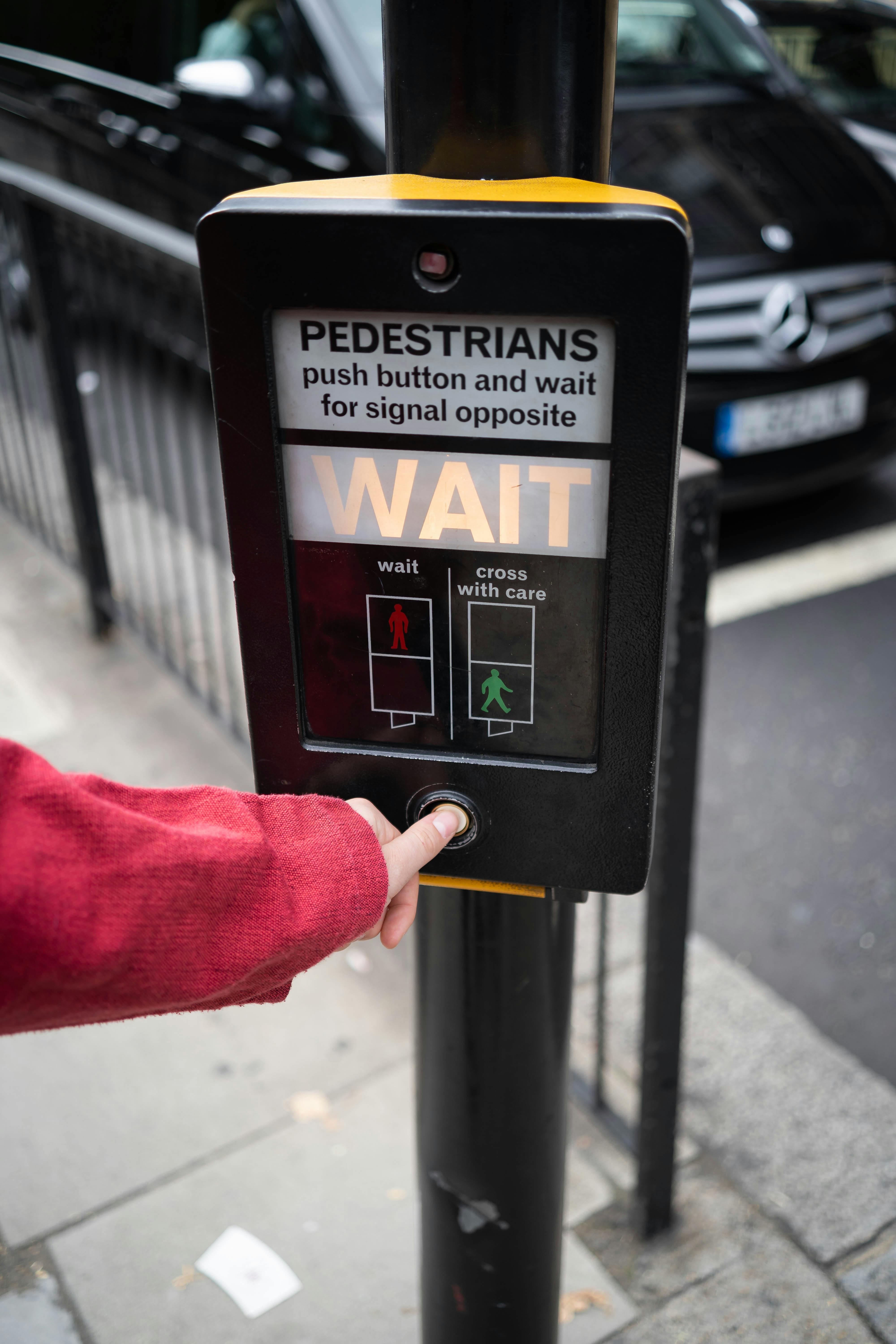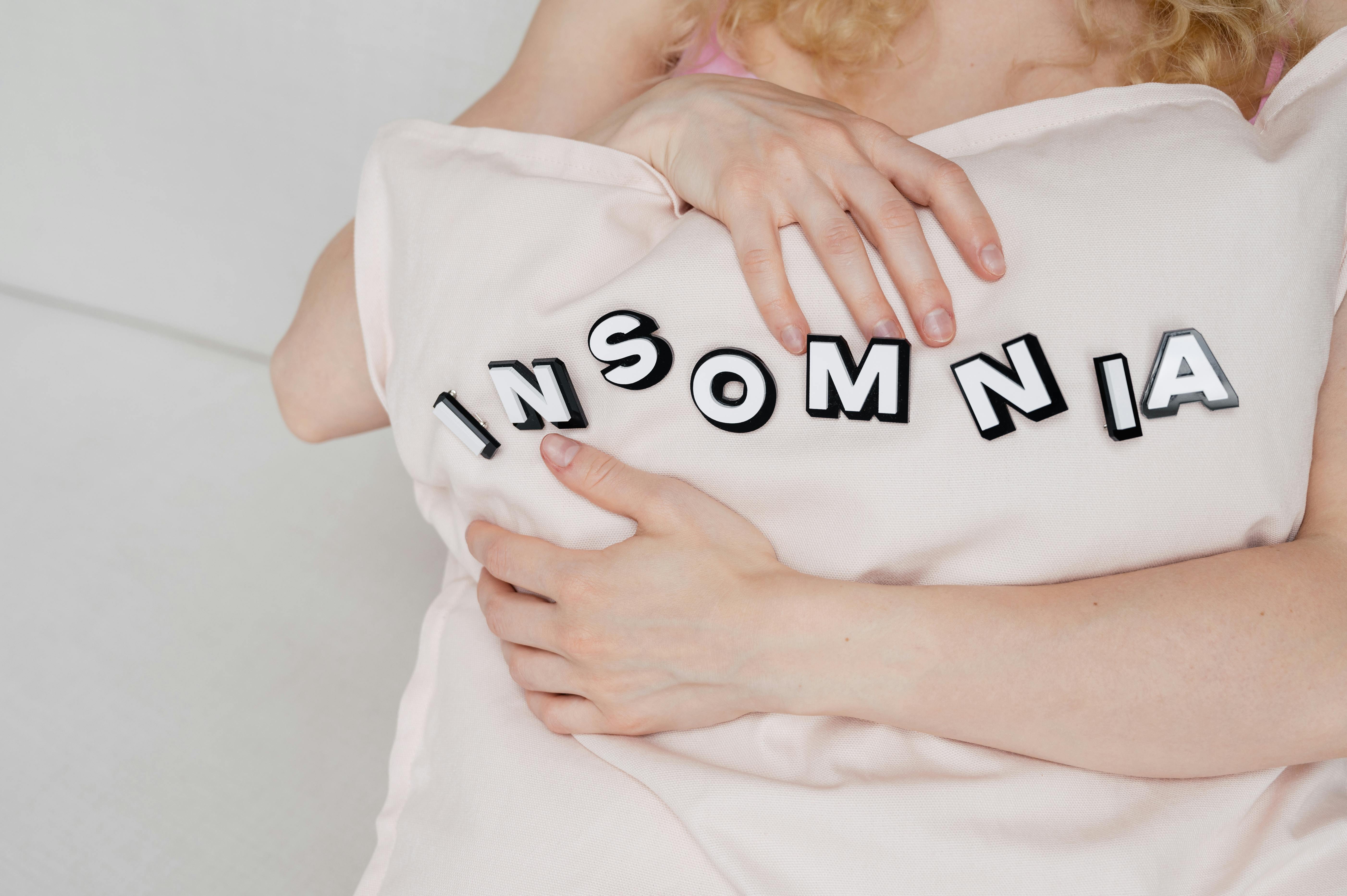BY: Kodi Robertson
The theater was dark– it was so silent you could hear a pin drop among the deep breaths of everyone watching Jordan Peele’s US. Before anyone could take a second breath, four shadows emerged outside of the on-screen family’s home. This kind of thing was the stuff of nightmares. US delivers a powerful message in a beautiful package and helps bring back simplicity in horror films that has made movies scary since Alfred Hitchcock.
As I lay down some of the mechanics of this movie that worked, I’ll save any potential spoilers for the themes that Peele incorporates in this thriller. Some spoilers may be given so, (you have been warned) I’ll go ahead and inform you that this movie follows the idea of duality. Some actors will play as one character and the “doppelganger” of that character. I apologize if this spoils anything for anyone. Now onto shots and angles.
When it comes to shots and angles, Peele does everything in his power to provide purpose with the camera. If you plan on tackling the film industry for a career as I do, one of the first things they teach you about camera work is that the lens reveals all. Peele cashes in on every close-up and extreme close-up to give us insight on what the characters are thinking. On the opposite end, he also uses close-ups to invade the audience’s comfort space and keep us on our toes.
Leading lady Lupita Nyong’o plays as Adelaide, the mother of this fictional family. Nyong’o also plays the primary antagonist “Red,” and Peele directs her talent in all the right ways. One such example of good use of extreme close-ups comes in the form of confrontation between protagonist and antagonist. There are at least 30 seconds of screen time where the audience is left staring into Red’s eyes, and each second feels like an eternity of dread.
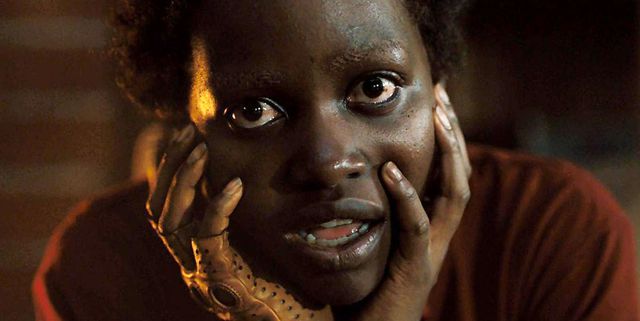
Later we see Adelaide’s daughter Zora (played by Shahadi Wright) in a close-up shot with her mother behind her in the backseat of their car. It is at this moment we see the character cast away her innocence and enter survival mode, and it is by far one of my favorite shots throughout the whole film.
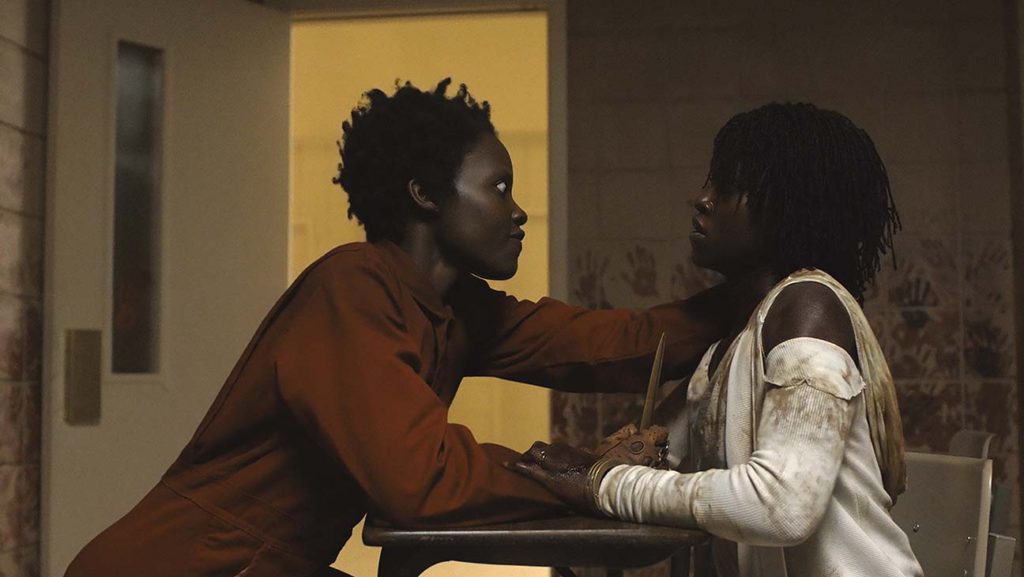
In most movies, medium shots help us understand the relationships between characters. One such scene showcases the connection between Adelaide and her husband Gabe (played by Winston Duke). Duke takes full responsibility of being the main comic relief of the movie, and Peele uses this element to his advantage. Gabe represents the moments in life when people laugh due to not being able to respond to horrifying things on the spot. Gabe and Adelaide share onscreen chemistry that seems genuine at first, but it also seems as if there’s something missing in their relationship. The car ride to their summer home is a perfect visualization of characters who fulfill supporting roles for their family.
Color is important in guiding the audience into feeling a certain way– it can be used to create dread, fear, hope, love, and even divinity. Red is a commonplace color used to convey evil or present danger. Peele uses red effectively in such a shot as Adelaide is walking into another subway room. Audiences catch the color red “bleeding“ onto the character and imprinting a horrifying mood throughout the theater. Peele also uses the color yellow/amber to deliver a sense of lightness or divinity. It was stunning seeing Adelaide go down an escalator almost covered in gold lighting as she descends into the underground tunnels. It was just purely unsettling seeing a character being forced to leave the light and enter the dark– very tastefully symbolic.
WARNING- THIS MAY CONTAIN SPOILERS:
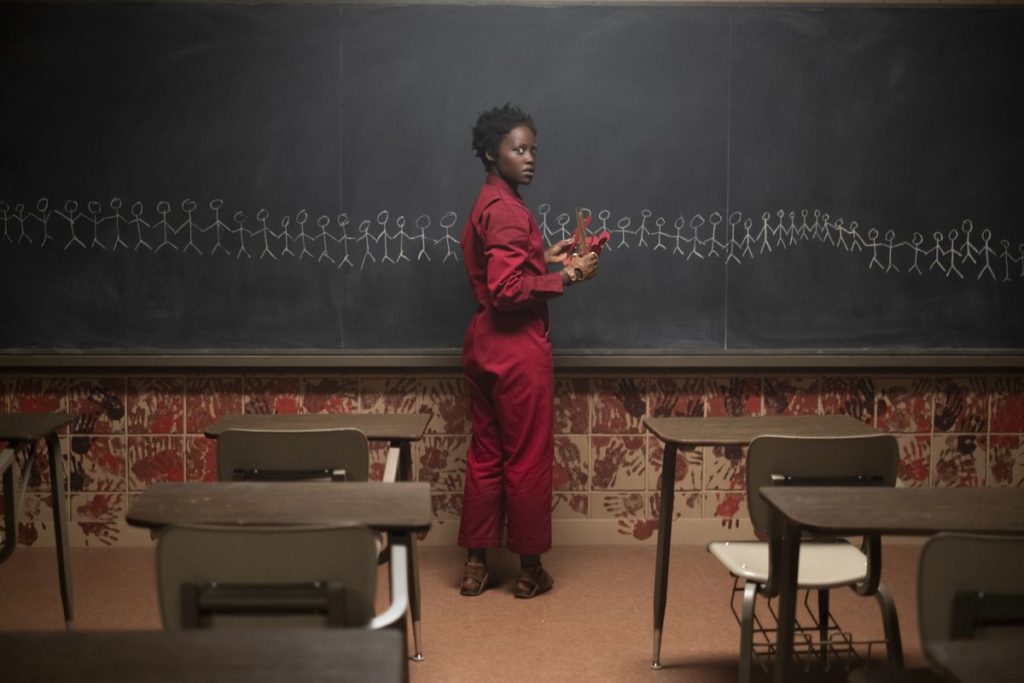
Now that we got that out of the way, the themes of this movie may give some key plot elements away. Read at your own risk.
There are MANY things you can take away from this movie. US does a wonderful job at picking at the audience’s brain without forcing an idea onto them. Themes of the “Silent Majority in Trump’s America” came to mind for me after I left the theater. Seeing how all the clones of the characters could not speak very well and wore red gave the impression of how the GOP’s fanbase, dubbed “Silent Majority,” seems to have arisen in today’s society. The obvious theme of duality comes into play as characters struggle to fight off clones of themselves. By the end, we see only Adelaide’s family survive their clones and attackers, but we see at the end of the film that Adelaide’s son notices something odd about his mother– I’ll leave that spoiler alone for you to witness yourself.
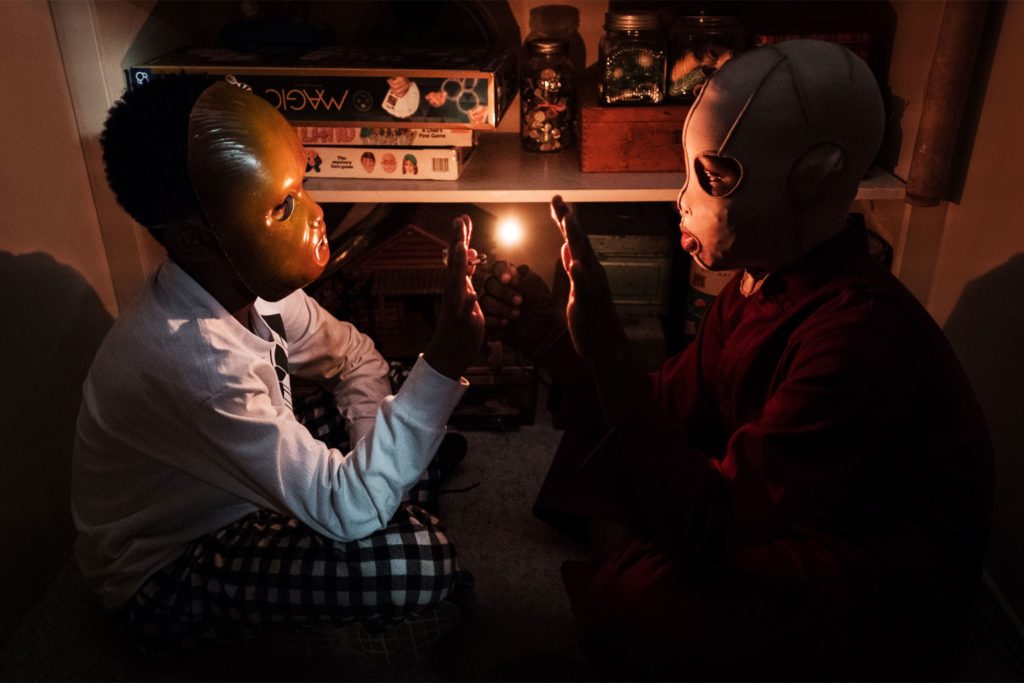
There’s also the theme of the struggle between ourselves and our own darkness. The fact that clones are living in the shadows of the underground suggests that Peele wants to share the idea that we eventually are forced to face our demons.
Finally, there’s the theme of social and economic classes. The clones seem to me like they represent the homeless since we see at the end of the movie that the clones all gather arm in arm much like the “Hands Across America” campaign. The campaign aimed to raise awareness of hunger and homelessness, and Peele may very well be trying to make a statement on how the rich seem to get richer while the poor seem to get poorer. All I know is that Jeremiah 11:11 is the key to understanding the overall theme for this film. I leave that to you to decide for yourself what the movie’s message was.
Overall, I loved US; the cinematics and camera work are superb, the themes found in the film are refreshing, and most important of all we have a cast of characters that anyone of any race can relate to. I sincerely hope Jordan Peele went home after the premiere proud of his accomplishment because he certainly hit the ball out of the park with this film. I wouldn’t necessarily call this film a “horror film,” but a “horror thriller.” This film has created a new sense of fear that possibly somewhere underground are clones of you and me imitating our lives and waiting… and waiting… for the right time to strike.



